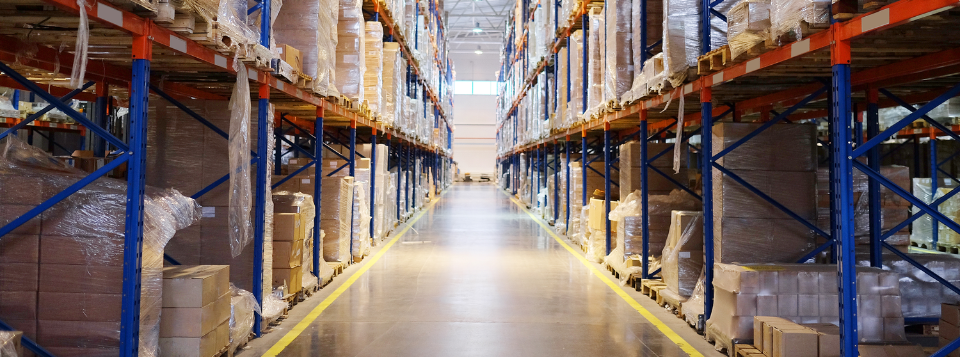Managing labour shortages in logistic operations

The last few years have proved to be challenging for UK business. 2024 has seen the continuation of a persistent labour and skills shortage in the logistics industry.
This has left many companies struggling to recruit and retain warehouse operatives against a backdrop of rising wage costs.
An efficient supply chain is reliant on warehouse staff to keep goods moving. Currently, many logistics operations are challenged to recruit a team of people to make that magic happen.
Businesses must find ways to address the labour shortage in a competitive job market. This is necessary to keep their logistics running smoothly. Packaging automation could be one such solution to help ease the tension of these labour shortages.
- 1.
- 2.
- 3.
- 4.
- 5.
- 6.

Why does the UK logistics industry have a labour shortage?
The UK has been going through changes in recent years, especially after Brexit. This has affected the logistics industry, which traditionally depended heavily on workers from the EU. During the Covid years, older workers, across many industries, made life-changing decisions to retire early. These factors have narrowed the pool of skilled labour available to employers.

The impact of labour shortages on warehouse operations
Businesses are offering higher wages to attract and retain warehouse staff. This is because there is a shortage of workers in the competitive labour market, driving up business costs and impacting margin.
If there are no staff available, it will affect how quickly products can be picked, packed and shipped out. This can lead to supply chain disruptions, delayed shipments and strained customer relationships. This may cause current team members to work extra hours, leading to mistakes, health and safety problems and damage to products.

What is packaging automation?
Packaging automation is a system which applies packaging consistently, with minimal operator intervention. There are machines that can tape, wrap, box, and bag items automatically, making the process easier and more efficient.
Automated packaging systems are ideal for high demand packing environments where speed and efficiency are key. If you’re shipping a range of differently shaped products in significant volume, the right packaging machinery and processes can help you to optimise your operation, cut costs and future-proof your production line for growth.

How packaging automation can help
Packaging automation offers an opportunity to reduce the challenges of labour shortages, supporting packing efficiency and enabling businesses to remain competitive. Packaging automation will:
Increase Efficiency and Productivity – as systems speed up the application of packaging. They can pack, seal, label and wrap products at high speed, quickly and accurately offering a consistent packing time.
Reduce Costs – through consistent packaging application, minimising material use as well as freeing up packers to do more useful tasks. For example, a stretch wrap machine will apply less stretch wrap with consistent tension, reduce packing time and free up the warehouse operator to go and fetch the next pallet to wrap.
As automated packaging systems use so much less material, return on investment can be a matter of weeks or months, depending on the initial outlay.
Reduce Damages and Returns – as packaging material is applied consistently and to a high standard, it reduces incidents of over and under packing and the potential of damages in transit.
Reduce Health and Safety Incidents – as warehouse operative tasks are often repetitive, packaging automation reduces pulls, strains and overstretching incidents as the machine completes the packing process.
Manage Spikes in Demand – as automated packaging solutions can be scaled up or down as appropriate. This reduces the challenges of hiring and training temporary staff during Peak season.

Types of packaging automation available
Packaging automation can take on a variety of forms, depending on your requirements.
A semi-automatic process is part manual and part automated. For example, an operator may start the process, but an automated packing system will finish it. This is typically a cheaper option if you are looking to introduce some automation but are working with a budget constraint.
A fully automatic packing process is programmed from the beginning to completion. This can include everything from picking, packaging application and palletisation for dispatch.
There are packaging automation solutions available for box building, tape application, holding product in place, void filling, bagging, strapping and applying stretch wrap.

Key considerations for implementing packaging automation
There is a range of solutions available for packaging automation from semi-automatic to fully automatic and integrated systems. The best choice for your business will be dependant on your business goals, the types of products you are packing and the size of your operation.
Before purchasing machinery, talk to a packaging automation expert who can help you determine how automation can benefit your operation and increase efficiency.
They can evaluate your warehouse layout and suggest ways to improve space, increase capacity, and efficiency. They can also help you to calculate a return on investment based on operating hours and packaging use. Often large investments in machinery can be daunting, however, there are rental schemes available for some systems.
By using packaging automation, your team can focus on more important tasks instead of repetitive ones.
Regular maintenance of automated systems is important to ensure they can operate at peak efficiency.
The UK logistics industry are facing a challenging labour shortage. However, using packaging automation can help improve operational efficiency, reduce costs, and minimise the use of packaging materials. This can help businesses succeed in the competitive job market and prepare for growth and seasonal increases in demand.
Learn more about packaging automation and available solutions by downloading our guide. It will help you find the best solution for your operation and reduce total cost.
At Macfarlane Packaging, we help customers reduce costs and increase the efficiency of their packing operations through the successful integration of packaging automation. Contact us today to learn how we can help your business.
